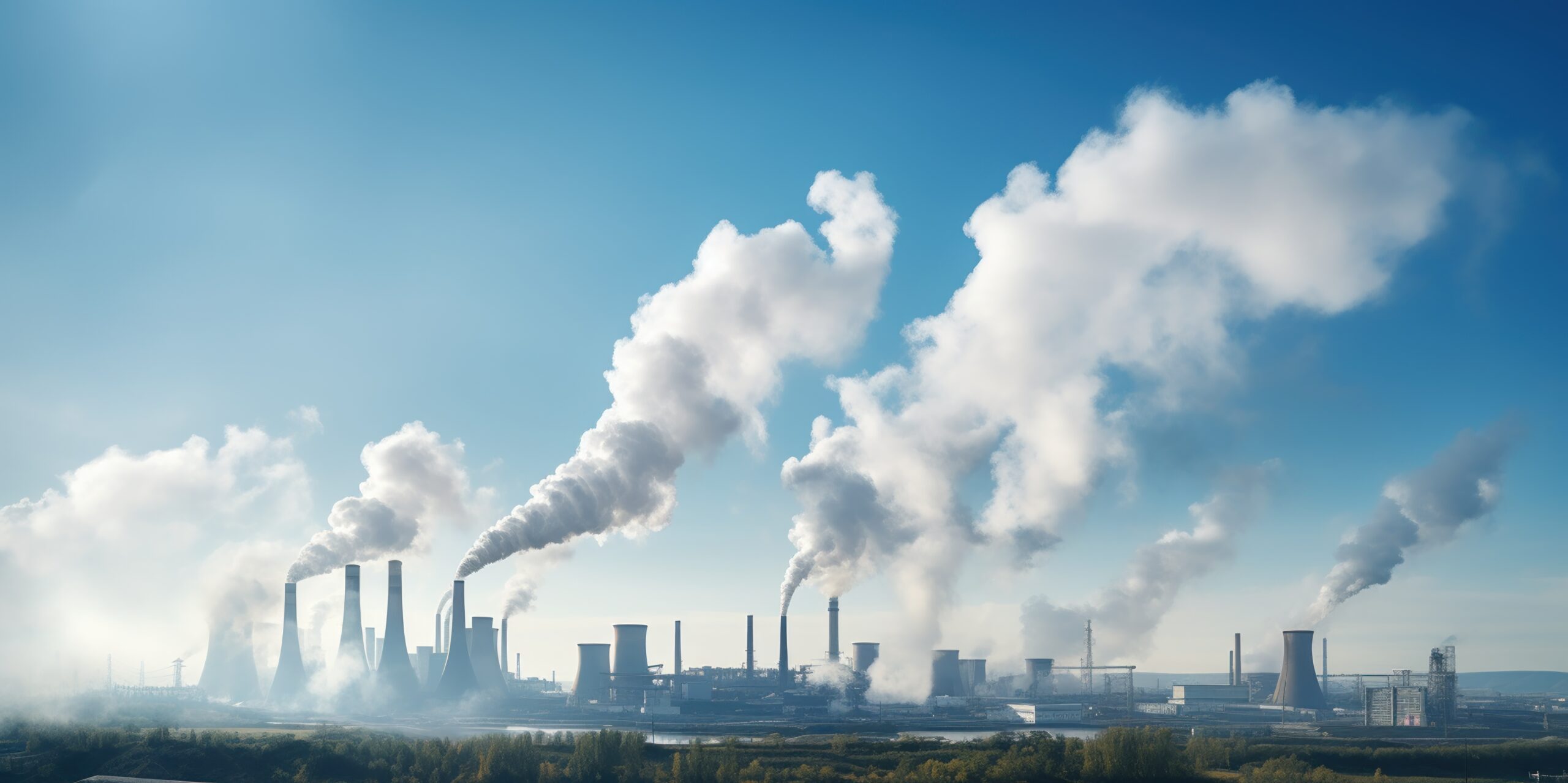A world at a crossroads: how the World Energy Outlook 2025 charts the path to industrial decarbonisation

L’Agence Internationale de l’Energie (AIE) has published l’édition 2025 du World Energy Outlook. This document provides a comprehensive overview of current and future energy needs, changes in the balance between different energy sources, and outlines prospects based on the policies pursued by governments.
A changing energy landscape
In 2024, global primary energy consumption crossed a significant threshold, with total energy consumption reaching 650 EJ. Fossil fuels still accounted for a large majority – nearly 80% according to the IEA. [1]
If total energy demand continues to rise, it will be mainly emerging economies (Asia, Africa, Latin America) that will drive this growth. According to the WEO 2025, under the Current Policies Scenario (CPS), primary energy consumption could increase by around 15% by 2035 (~ +90 EJ) compared to today. [2]
This observation highlights a twofold challenge: combining economic growth with energy transition, since high-income countries are already seeing their per capita energy consumption plateau, while developing countries are significantly increasing their needs.
Three scenarios for three possible futures
The IEA structures its analysis around three main trajectories:
| Scenario | Main hypothesis | Key implications for industry and emissions |
| CPS (Current Policies) | Only policies that have already been implemented are taken into account. | Growing energy demand, fossil fuels still dominant, global energy CO₂ emissions close to 40 Gt/year in the 2030s.[3] |
| STEPS (Stated Policies) | Includes public commitments that have been announced but are not necessarily binding. | Acceleration of renewables, coal peaks before 2030, but climate targets (1.5°C) remain out of reach. For example: oil use peaks at ~102 mb/d around 2030.[4] |
| NZE (Net Zero by 2050) | Trajectoire ambitieuse : prix du carbone Ambitious trajectory: high carbon price, high electrification, CO₂ capture. | Energy-related CO₂ emissions will fall from ~38 Gt in 2024 to less than 10 Gt by 2035, then to near zero by 2050. Even in this scenario, it is likely that temperatures will exceed 1.5°C before falling back below this threshold..[5] |
These scenarios are not predictions but explorations: they help to visualise the consequences of political, technological and economic choices.
The energy mix in transition
3.1. An explosion in renewables
The 2025 edition of the WEO emphasises that the ‘age of electricity’ is now upon us: demand for electricity is growing much faster than overall energy demand.[6]
In the STEPS scenario, the share of renewables in electricity generation exceeds 50% by 2035, thanks to the rapid fall in the costs of solar PV and wind power..[7]
For example, it should be noted that:
- Electricity currently accounts for around 21% of global final energy consumption, but powers sectors representing more than 40% of the global economy.[8]
- In certain markets, investment in data centres and AI now rivals that in oil..[9]
This implies that for industry, choosing clean electricity has become a major driver of decarbonisation.
However, this transition to predominantly renewable electricity relies on materials that are not found everywhere: critical minerals.
3.2. Nuclear power: a remarkable comeback
The report also notes a resurgence of nuclear power – with around 50 countries mentioning nuclear power in their strategies – and plans for small modular reactors (SMRs).[10] Nuclear power plays a strategic backup role to compensate for the variability of renewables in a heavily electrified system.
3.3. Fossil fuels: declining but still present
In all scenarios, coal, gas and oil will not disappear overnight. Example: under STEPS, oil demand peaks at around 102 Mb/d around 2030..[11]
Regarding gas and LNG: LNG export capacity is estimated at ~300 billion m³ (≈300 bcm) by 2030, reflecting strong supply momentum..[12]
This persistence of fossil fuels reinforces the idea that industrial transformation will need to focus as much on reduction and replacement as on outright elimination.
4. Critical raw materials: a geopolitical issue
One of the key messages of the 2025 edition is that ‘energy security’ is no longer limited to access to oil/gas but also concerns supply chains for strategic minerals (nickel, cobalt, rare earths, etc.). According to the IEA, a single country, China, controls around 70% of the refining of 19 out of 20 critical minerals.[13]
For heavy industry – steel, batteries, electronics – this means:
- Increased risk of shortages or price spikes.
- Need to diversify sources (e.g. new projects in Africa, Latin America, Australia) and massively expand recycling.
- For governments and businesses, it is imperative to secure supply chains and anticipate geopolitical disruptions.
5. Decoding the industrial sector: where are the levers for decarbonisation?
5.1. The weight of the sector
Industry accounts for approximately 35–40% of final energy consumption and nearly 30% of CO₂ emissions. This proportion makes industrial decarbonisation a central pillar of the global energy transition.
5.2. Energy efficiency: the primary lever
The report notes that improving energy efficiency remains the most cost-effective and accessible lever. However, the pace of improvement is stagnating: the quick and ‘easy’ gains have largely been realised.
This means that for industry, shifting into high gear will require next-generation efficiency strategies: heat recovery, AI optimisation, digitalisation, etc.
5.3. Industrial electrification
One of the fundamental levers is to replace fossil fuel-based thermal systems with electrical equipment in industry (induction furnaces, electro-reduction, etc.). In sectors such as steel (DRI + EAF) and cement (oxy-fuel furnaces, raw material substitution), gains could be in the order of 30% to 50% by 2030/2035.
However, the IEA points out that success depends heavily on the price of electricity, the competitiveness of new technologies and network infrastructure.
5.4. Green hydrogen and new fuels
The WEO 2025 points to a rise in low-emission hydrogen, but also notes that the trajectory is later than it was in previous scenarios (the 2030 target has been revised downwards).[14]
For heavy industry, hydrogen is a key substitute (steel, chemicals), but requires massive deployment and lower costs.
5.5. Carbon capture, utilisation and storage (CCUS)
CCUS remains an essential lever for sectors that are difficult to electrify, but the WEO 2025 report points out that the targets – gigatonnes of CO₂ captured per year by 2035 – remain largely out of reach without large-scale policies and funding.
6. Public policy: the essential catalyst
6.1. Carbon pricing
A high carbon price is the most powerful instrument for steering the industrial system towards decarbonisation. The WEO 2025 confirms this role but indicates that many emerging countries remain at levels that are too low to induce technological breakthroughs.
6.2. Subsidies for electrification and hydrogen
Public aid (investment loans, guarantees, etc.) will be essential to bridge the gap between current and future technologies in the industry.
6.3. Normes, reporting et régulation
Stricter energy efficiency standards, reporting requirements (Scope 1 to 3), and CO₂ capture quotas are increasingly becoming the norm in certain leading countries.
6.4. Funding and public-private partnerships
The report reiterates that an investment of approximately $1 trillion per year in industry and energy infrastructure is needed between now and 2030 in order to stay on track for NZE. Financing mechanisms – green funds, climate bonds, guarantees – must be mobilised at the global level.
7. The role of digital technology
The industrialisation of the transition also relies on digital technologies: AI, big data and industrial IoT enable efficiency gains of up to 10% (energy loss detection, real-time management, process optimisation). These levers are already economically profitable and can serve as an immediate lever for many companies.
8. What does the future hold?
The WEO 2025 highlights two essential pillars for a carbon-neutral industry:
- energy decentralisation (renewable energies, electrification, smart grids);
- relocalisation of critical supply chains (minerals, metals, technological infrastructure).
Three scenarios illustrate possible trajectories:
- If policies remain at the CPS level, industry will continue to operate mainly on coal and gas, with emissions well above what is compatible with +1.5°C.
- STEPS promises a significant improvement, but without strong carbon pricing and massive support for hard-to-abate industrial technologies, the trajectory remains insufficient.
- NZE requires radical transformation: high carbon prices, mass electrification, hydrogen, CCUS, international cooperation.
- Anticipating industrial decarbonisation is becoming a major necessity. Companies that make the shift early – efficiency, electrification, hydrogen, CCUS – will be better positioned to thrive in tomorrow’s energy landscape.
In short: the future of industry no longer depends solely on what it produces, but on how it produces it. The challenge is to control energy, materials and carbon; and to achieve this, choices must be made today – technological, financial and strategic choices.
[1] https://www.iea.org/reports/world-energy-outlook-2025/executive-summary
[2] https://www.iea.org/reports/world-energy-outlook-2025/current-policies-scenario
[3] https://www.iea.org/reports/world-energy-outlook-2025/current-policies-scenario
[4] https://www.iea.org/reports/world-energy-outlook-2025/stated-policies-scenario
[5] https://www.iea.org/reports/world-energy-outlook-2025/executive-summary
[6] https://www.iea.org/reports/world-energy-outlook-2025/overview-and-key-findings
[7] https://www.iea.org/reports/world-energy-outlook-2025/stated-policies-scenario
[8] https://www.iea.org/reports/world-energy-outlook-2025/executive-summary
[9] https://www.iea.org/reports/world-energy-outlook-2025/executive-summary
[10] https://www.iea.org/reports/world-energy-outlook-2025/executive-summary
[11] https://www.iea.org/reports/world-energy-outlook-2025/stated-policies-scenario
[12] https://www.iea.org/reports/world-energy-outlook-2025/executive-summary
[13] https://www.iea.org/reports/world-energy-outlook-2025/executive-summary
[14]https://www.reuters.com/sustainability/climate-energy/iea-cuts-2030-low-emissions-hydrogen-production-outlook-by-nearly-quarter-2025-09-12/
More news News


